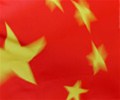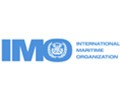China Growth Numbers Betray Waning Momentum

China reported record year-over-year growth of 18.3% in the first three months of 2021.
But the more telling figure might be the economy’s 0.6% expansion compared with the quarter before–a historically sluggish pace that suggests momentum is slowing, one year into China’s coronavirus recovery.
In the 12 months since its unofficial reopening–authorities lifted the lockdown of Wuhan, the original center of the coronavirus, on April 8 last year–the world’s second-largest economy has defied expectations.
For much of 2020, the export sector led the way, with China’s factories churning out great volumes of medical protective equipment and work-from-home computer gear for a world in lockdown. And as authorities stamped out the virus at home, consumers began, gradually, to spend again.
The result was full-year gross domestic product growth of 2.3%, making China the only major economy in the world to expand in a pandemic-scarred 2020.
Now, though, signs of waning momentum are starting to appear. That latest quarter-on-quarter GDP figure marks the slowest growth rate in the past decade, with the exception of the coronavirus-hit first quarter of 2020, said Julian Evans-Pritchard, an economist with Capital Economics. He points to softening numbers in the industrial, construction and services sectors.
J.P. Morgan economists, pointing to that quarter-on-quarter number, lowered their full-year growth forecast to 9.3% from 9.5%.
“The domestic economic recovery is not yet solid,” Liu Aihua, a spokeswoman for the National Bureau of Statistics, said Friday, pointing to uncertainties in the manufacturing sector that have held back investment and rising joblessness for migrant workers and young graduates.
Ms. Liu said the number of migrant workers who headed to cities for work in the quarter was roughly 2.5 million lower than before the coronavirus, reflecting the struggles of their primary employers: the services sector and smaller enterprises.
Meanwhile, the jobless rate for workers aged between 16 and 24 was 13.6% at the end of March, up 0.3 percentage point from a year earlier and far higher than the headline urban unemployment rate of 5.3%, Ms. Liu said.
Some of the other monthly economic indicators released Friday by Beijing also fell short of forecasts, slowing more sharply than expected.
March industrial output was up 14.1% from a year earlier, down from the 35.1% pace of January-February, and lower than forecasts. Growth in fixed-asset investment slowed as well, to 25.6%.
“The underlying growth trend is likely to continue to slow,” Hao Zhou, senior economist for Commerzbank, told clients in a note Friday. Tommy Xie, an economist at OCBC Bank, pointing to the average growth rate of 5% for the first quarters of 2020 and 2021, says China’s economy still hasn’t regained its pre-pandemic growth potential of roughly 6%.
There were bright spots. Retail sales, long a laggard, were up 34.2% in March from a year earlier– better than expected–and accelerated in month-on-month terms.
Ms. Liu, the government spokeswoman, said consumption in the catering sector rebounded to pre-virus levels for the first time in March. Despite weakness in pockets of the labor market, she said, “the continued economic recovery as well as improving labor income and job market will further lift China’s consumption.”
Shen Lu, a resident of Beijing, recently joined the retail recovery, taking her 5-year-old daughter to Shanghai’s Disneyland in April–her first out-of-town trip since the pandemic first exploded more than a year ago.
Ms. Shen says she plans to travel again during the five-day-long Labor Day holiday that begins May 1, and likely throughout the summer–“revenge travel,” to make up for lost time.
“We reduced a lot of expenditures in the past year–on entertainment, kid’s playgrounds and travels–because of the coronavirus pandemic,” Ms. Shen said. “Now, with the vaccine rollouts and warming weather, we finally can get out and travel around.”
Other economists have argued that the 0.6% quarter-on-quarter economic expansion simply reflects a natural tapering of growth following last year’s strong post-pandemic snapback.
“China’s economy has returned to normalization,” said Serena Zhou, a Hong Kong-based economist for Mizuho Securities. She said she expects retail sales and exports to support China’s economy in the first half of the year, before exports begin to ease in the latter half of the year as factories in other countries come back online. Fiscal stimulus in the U.S. could boost Chinese exports–though it could also exacerbate producer inflation, which has begun to pressure China in recent weeks.
Last week, Beijing said producer prices in March were up 4.4% from a year earlier, the fastest rate of increase in more than two years, while consumer prices were up 1.6% from the previous month.
In interviews, Chinese exporters have complained about falling profits as raw-materials prices surge and global shipping costs remain elevated. While order volume has reached pre-coronavirus levels, some exporters say profits have dropped by more than 30% this year.
On Friday, Ms. Liu of the statistics bureau played down inflationary worries, noting that pork prices, a major driver of consumer inflation, have continued to fall.
Source: Dow Jones

 Hellenic Shipping News Worldwide Hellenic Shipping News Worldwide, Online Daily Newspaper on Hellenic and International Shipping
Hellenic Shipping News Worldwide Hellenic Shipping News Worldwide, Online Daily Newspaper on Hellenic and International Shipping





















 PG-Software
PG-Software